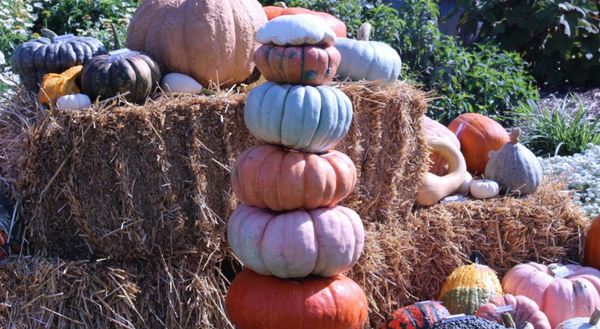
Celebrating the year’s crops with a Thanksgiving feast has been a tradition for over 400 years. Likely in 1621, individuals fed their families and communities by growing vegetables in the field. This past summer, Illinois residents went to farmer's markets despite pandemic conditions as America continues to demand locally sourced vegetables and increased access to healthy food.
“Locally grown food isn’t shipped thousands of miles, which reduces the carbon footprint, supports our local farmers, and offers tastier, more nutritious food. When food doesn’t have to travel far, it can be picked ripe, and eaten soon after harvest, retaining more nutrients and flavor than food picked unripe and stored for a longer period,” says Extension Nutrition and Wellness Educator, Jenna Smith.
Fall is a great time to grow and harvest vegetables because lower temperatures trigger a release of sugars that give crops a sweeter or milder flavor.
In my fourth year of taking the Local Thanksgiving Challenge, it has become a tradition for my family to source the entire meal locally. Join me this year in taking the challenge.
Take the Local Thanksgiving Challenge
Visit your local farmers market
Sweet potatoes, squash, beets, onions, leafy greens, brussels sprouts, carrots, pumpkins, garlic, honey, meats, cheese, eggs, and apples are just a few Thanksgiving ingredients you can find at the market. At this time of year, think cool-season vegetables like root crops, brassica transplants (think cabbage, broccoli, cauliflower), and leafy greens.
Decorations: Local flower growers will be highlighting some of the flowers they grew this year in dried bouquets and wreaths.
Can’t make it out? Shop online farmer's markets that source from local farms.
Visit your local bakery
Check out a locally owned bakery for bread, rolls, pies, and cookies.
Buy local pumpkins
Pumpkins are a top Illinois crop. An Illinois grower likely produced the pumpkins used in decorations and the pumpkins canned and used in pies. About 90% to 95% of the processed pumpkins in the U.S. are grown in Illinois.
For decoration, pumpkin towers are created from pumpkins called flat stackers. They come in several colors and add instant holiday charm.
Buy a local turkey
Extension Local Food Systems and Small Farms Educator, Nick Frillman says, before you go out and buy a grocery store turkey, consider your local family farm by buying a heritage breed and/or pasture-raised turkey for your special meal.
Buy local honey
Did you know honeybees visit around two million flowers and fly over 55,000 miles to produce just one pound of honey? The best way to find local honey is to start with your local farmers' market or find a local beekeeper. Most state departments of agriculture keep a registry list of certified beekeepers so that you could buy direct from the beekeeper closest to you!
Transitioning from a traditional store-bought Thanksgiving meal to a locally sourced one can be a challenge. If you can’t purchase your entire menu locally, start small and choose the options that work best for you. A pumpkin centerpiece or a locally purchased jar of honey gives thanks to the farmers and producers in your community this holiday season.
To learn more about the Local Thanksgiving Challenge, visit the University of Illinois Extension Facebook page on November 18 at noon to hear myself and fellow horticulture educators discuss the Local Thanksgiving Challenge on "Live with the Horticulturists."
ABOUT THE AUTHOR: Kelly Allsup is a Horticulture Educator for University of Illinois Extension serving Livingston, McLean and Woodford Counties. She meets the educational needs of her community, including local chapters of Master Gardener and Master Naturalist volunteers, through expertise in home horticulture and entomology. Her passion for ecologically-friendly gardening and all things plants makes her a dynamic speaker on topics that range from beneficial insects, growing vegetables and fruits, to urban trees.